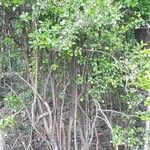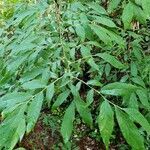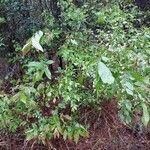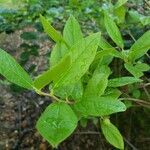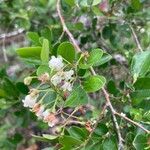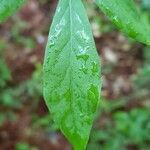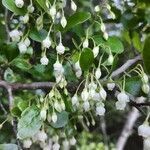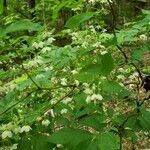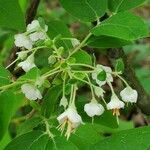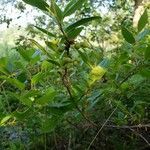Plants frequently crown-forming, suckering when disturbed, forming small or extensive colonies; twigs of current season variously colored, most often green or glaucous, glabrous to densely hairy, sometimes pilose or glandular (not verrucose). Leaf blades usually pale green or glaucous abaxially, green adaxially, elliptic, 20-80 × 9-32 mm, ± membranous, margins usually entire, inrolled on more-coriaceous blades, surfaces glabrous or densely hairy, rarely glandular. Inflorescences 2-7-flowered, sometimes flowers solitary. Pedicels subtended by leaflike bract (ca. as long as flower). Flowers: corolla lobes spreading at anthesis, white to greenish white, sometimes purple veined, 4-8 mm; filaments glabrous or hairy. Berries green, yellow-green, yellow, purple, or black, often lightly glaucous, 7-18 mm diam., sometimes hairy and sparsely glandular. 2n = 24.
A shrub. It forms a crown and develops suckers. It grows 1.2 m tall. It loses its leaves during the year. The leaves are pale green and narrowly oval. They are 2-8 cm long by 1-3 cm wide. There are usually 2-7 flowers in a group. They are white to green. The fruit are green to yellow berries. They can be purple or black. They are 7-18 mm across.
